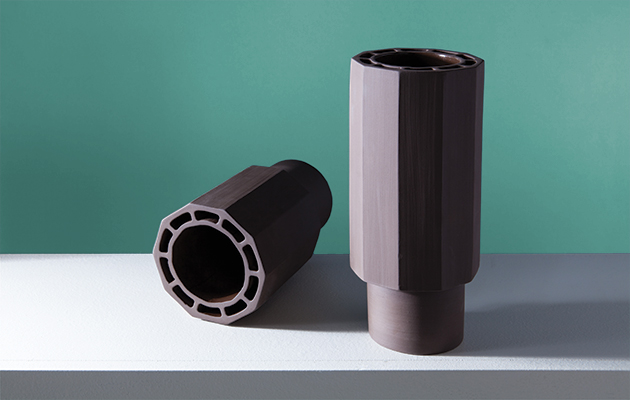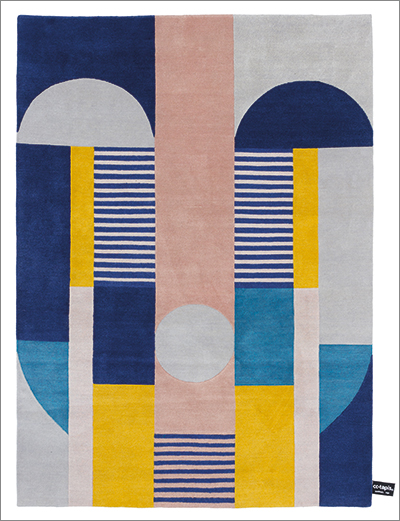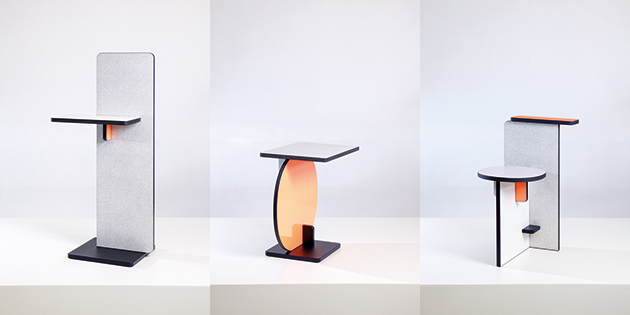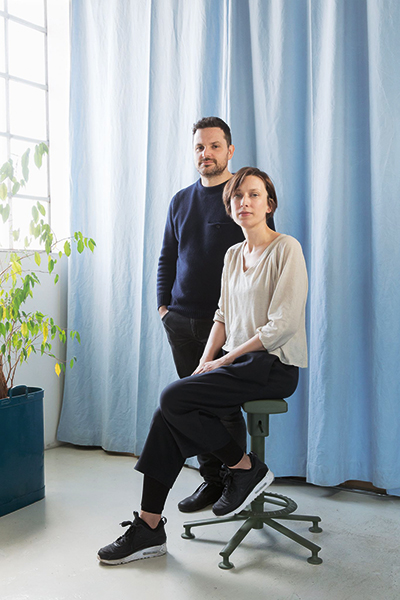|
|
||
|
If you can design one thing, you can design everything, wrote Massimo Vignelli. Venice-based duo Zaven are out to prove it. From product design to graphics to installations, they’re causing ripples far beyond the Grand Canal ‘Design isn’t the best job in the world,’ says Marco Zavagno. ‘But it’s the best job for us.’ The designer describes Zaven – the rising Italian studio he formed with partner Enrica Cavarzan in 2006 – as an outlet for their joint passion. Based in Venice, where they met and studied, the designers work fluidly across product design, graphics and installations – three modes of design they see as inextricable from each other. The scope of their portfolio is impressive: visual identities, scenography, exhibition catalogues, furniture, homeware, electronics and accessories are all treated with a sophisticated eye. The cross-disciplinary approach has a strong precedent in Italy and the pair subscribe to the Massimo Vignelli philosophy of Design is One: ‘If you can design one thing, you can design everything.’ Although the outputs seem diverse, they are bound by the sense that all design is essentially about communication. ‘It’s totally normal for us to mix these things,’ says Cavarzan. ‘For us, the graphics are part of the product itself.’
Chipo rug for cc-tapis (2017), handknotted from Himalayan wool The broad abilities of the studio are down to Cavarzan and Zavagno’s varied routes into design and, more practically, a need to be flexible in order to keep the studio in work as they grow. After studying at the Università Iuav di Venezia, Zavagno went on to be a senior designer at Fabrica in the years Jaime Hayón was head of department, working in both interaction and product design. Cavarzan decided to do a postgraduate degree in visual arts, meeting influential curators and artists, which led her to start producing catalogues and exhibitions. Zaven’s projects often begin by creating a tome of visual references, handed to the client as a starting point. Such a book was produced for Nike when the duo was selected as one of ten designers to contribute to the Nature of Motion exhibition at the Milan Furniture Fair in 2016. Asked to explore ideas around the Flyknit trainer fabric, the designers responded with The Athletes, a series of striking red lamps. Each lamp had an impossibly thin metal stem rising from a perpendicular base, arching or slanting to support a strip bulb and a Flyknit fabric diffuser. The forms were inspired by the graceful lines of athletes’ moving bodies, with a conscious nod to the sculpture of Alexander Calder and Anthony Caro. ‘The basic input from Nike was to express something about technology, but we also wanted to relate it to sculpture,’ says Zavagno. ‘Every time we design something, we like to really give it some meaning and a relation to something else.’ Zaven is keen to seek out more research-oriented projects like The Athletes. After the Nike exhibition, the designers were approached by Knoll to develop prototypes around our future use of the workplace and home. Unlike collaborations that have ended with a single outcome, such as the Lola dining chair for Atipico or the Duo daybed for Novamobili, this one is open-ended. Playing the role of designer as researcher, rather than author, also seems to suit their studious style and perhaps reflects the passing of the age of superstar designers. ‘If you design a chair, you know where you are going with it,’ Zavagno says. ‘[The Knoll project] is really challenging because you are constantly filtering what is interesting and what is not.’ |
Words Riya Patel
Above: Extra vase (2014), made using the traditional technique of ceramic extrusion |
|
|
Wood Wood Wood (2015) – the nine furniture pieces have UV edges that can be seen in blacklight |
||
|
The 2015 solo exhibition Wood Wood Wood at Milan’s Triennale Museum was a chance for the designers to play to all their strengths in product, graphics and environment. The opportunity was used to explore the studio’s visual language through nine furniture pieces, which Zavagno calls ‘a three-dimensional alphabet’. The collection is expectedly abstract, but also strangely familiar. Intersecting planes of black, white and orange are treated with a retro palette of textures that recall Formica laminate and Artex plaster – a nod to the time of Wim Crouwel and Ettore Sottsass. The exhibition was designed to be viewed in two modes: in daylight and in blacklight, which revealed the edges of the furniture to be coated with UV paint. ‘In the darkness you couldn’t see the furniture, just the edges. We had the idea of developing a language in hidden and visible form.’ The side project, Something Good, also allows Zaven to enjoy the total responsibility of art direction, curation and even production. After a successful venture in Milan in 2013 with a small exhibition of homeware prototypes made with local artisans, the studio researched how to produce the items in batches. ‘In our area there are a lot of craftsmen we like to collaborate with and research how to do new things,’ says Zavagno. The Extra vase (2014) is a stunning example of this. It was made by reviving the forgotten technique of ceramic extrusion with master potters in the town of Nove. The result is part industrial, part craft – a machine-made form that still bears the imperfection of the handmade.
Zavagno and Cavarzan. The duo founded Zaven in Venice in 2006 It’s a curiosity for craft that keeps Zaven’s work grounded. Bending three-dimensional objects to a two-dimensional whim, or designing with a strict visual code in mind, often leads to shallow aestheticisation, or simply bad design. The pair say that each new material they work with brings a new challenge for them to master – most recently a collection of carpets for the French brand cc-tapis. Zavagno says: ‘Of course, the first idea we had was from a graphic point of view. We wanted it to look a certain way. But our client told us they could make it more interesting by using a certain type of knot. When you start a project, you might think you know how it works but there is always a lot to understand first.’ With another of Venice’s design sons, Luca Nichetto, having departed for Stockholm early this year, it’s encouraging that the designers have chosen to root themselves locally. Zaven is often talked about as part of a new wave of Italian design, a label they dislike but recognise as an honour. They hope to work more internationally, but Venice may just give them their best shot at a Gesamtkunstwerk yet. Opening this spring, the restored Palazzo delle Zattere that will house the V-A-C Foundation for Russian contemporary art will feature Zaven’s communication, wayfinding and even scenography for its first concert. This article first appeared in Icon 166 – read more about it here |
||
|
Duo shelving for Novamobili at Milan Furniture Fair, 2016 |
||























